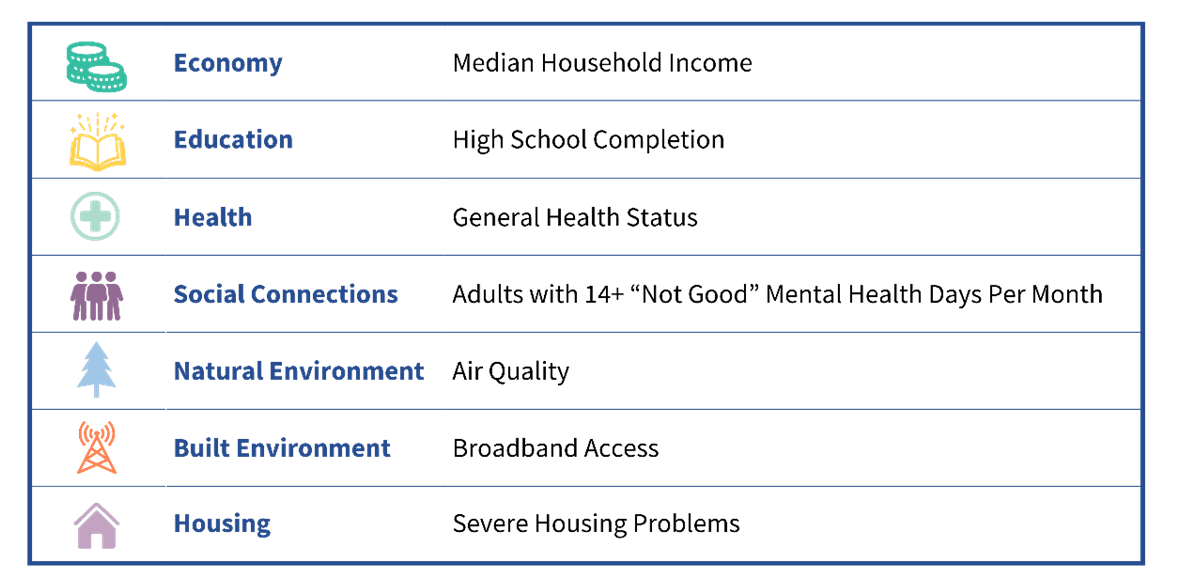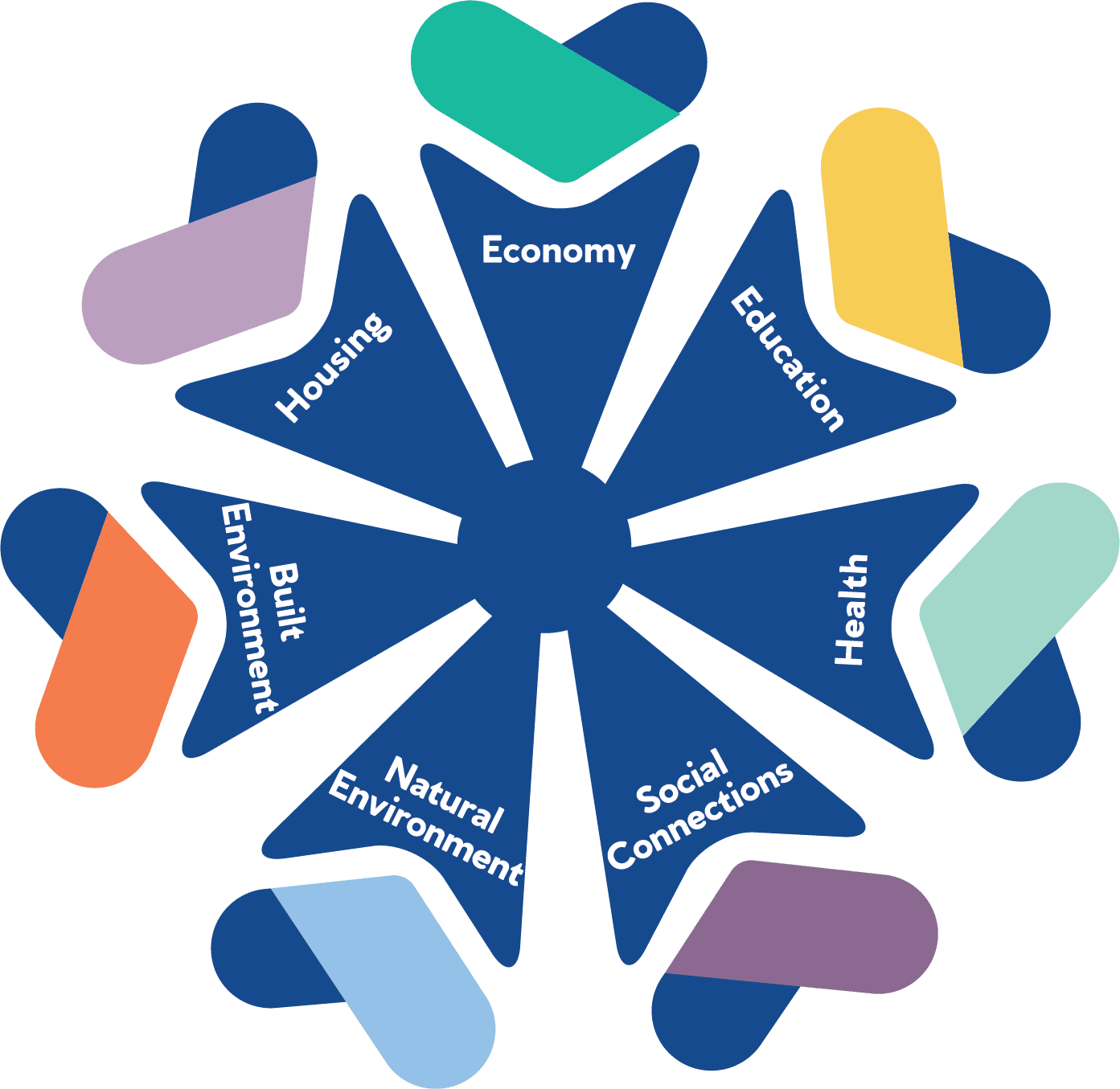A C.O.R.E. Resource for Measuring What Matters
The Common Community Scorecard is a companion to the Communities of Resilience & Excellence (C.O.R.E.) Guide. It provides communities with a shared foundation for understanding performance and progress across the key systems that shape quality of life.
The Scorecard offers a snapshot of how your community is doing today — and a framework to decide what to track next as you refine or develop your own local scorecard. It helps community teams see their story more clearly: strengths, challenges, and opportunities for impact.
Seven Aspects of Community Well-Being
The Common Community Scorecard includes seven indicators that reflect the interconnected systems shaping every community’s quality of life.

Each indicator was selected for its ability to measure long-term outcomes using freely available national data — ensuring every community, regardless of size or resources, can begin measuring performance immediately. Together, these measures help communities see the big picture: when one system falters, others are affected.
Accessing Your Digital Scorecard
C.O.R.E. offers communities the opportunity to purchase a customizable digital version of the Common Community Scorecard. Your team’s dashboard includes:
- Pre-loaded national and local data for all seven indicators
- Interactive visualizations to track progress over time
- The ability to add your own community-specific metrics
- Annual updates and data refreshes managed by C.O.R.E.
Pricing: Communities can license their own digital scorecard directly through C.O.R.E. (Contact us for current pricing and package options.)
Supporting Tools
To complement the Common Community Scorecard, C.O.R.E. provides:
- The Common Scorecard Cascading Metrics – with additional measures that tell a deeper story about your community
- Coaching and Workshops – to help teams interpret results, set priorities, and integrate scorecard insights into strategy
Get Started
Ready to see your community’s story in data?
Contact us at info@communitiesofexcellence2026.org to learn more about purchasing your digital scorecard or integrating the Common Community Scorecard into your Impact Pathway journey.

